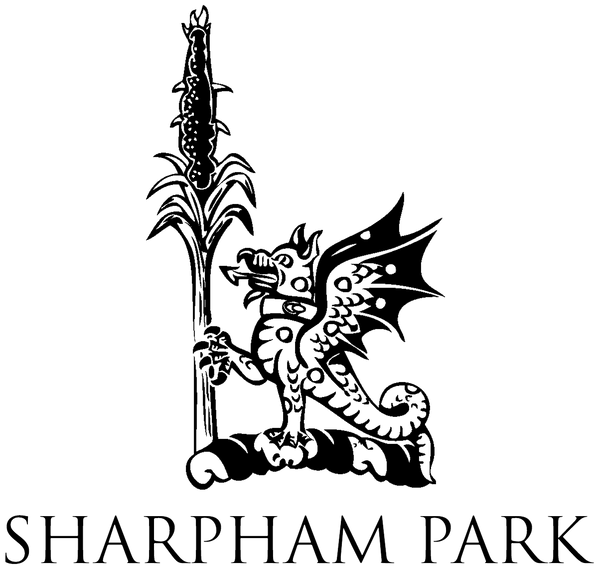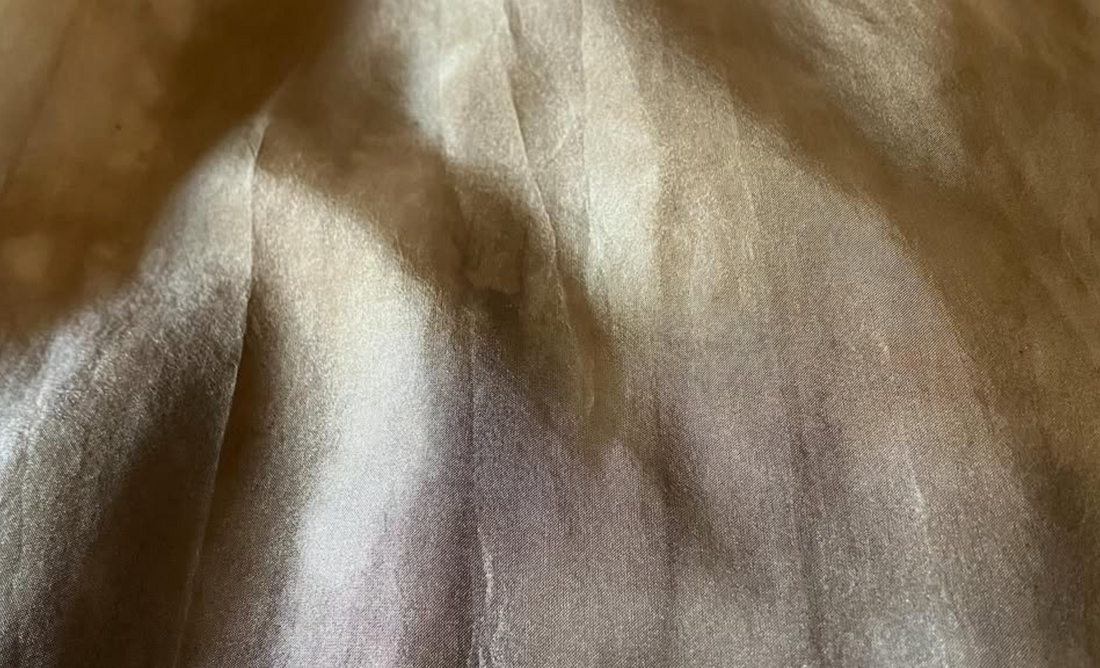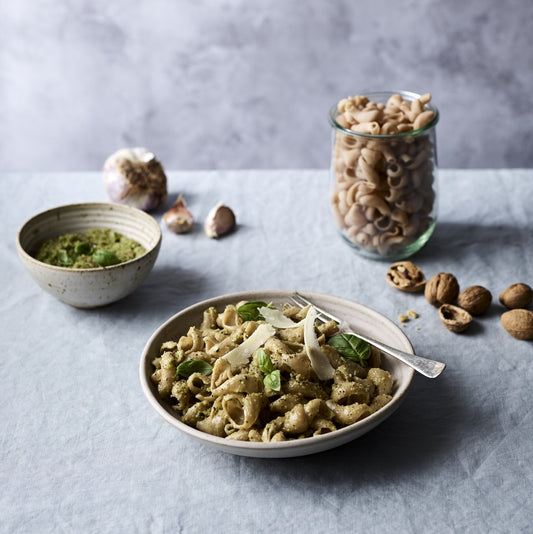AO Textiles: Regenerative Colour from Nature
At this year’s Sharpham Park Walnut Harvest and Press Day, guests were captivated by the display of walnut-dyed fabrics and colour created by Emma D’Arcey of AO Textiles. The hand-dyed silk wool yarn samples, along with delicate keyrings naturally coloured using walnut dye, hand felted and stitched by Karen Spurgin, drew admiration for their beauty, craftsmanship, and subtle spectrum of earthy hues - a testament to the versatility of the British Organic Walnut.
ABOUT AO TEXTILES
Founded in 2007, AO Textiles is a design consultancy dedicated to researching and developing local textile systems, with a focus on natural dyes. The collective, made up of Karen Spurgin, Penny Walsh and Emma D’Arcey, shares a vision of creating textiles that are both regenerative and commercially viable.

Their passion for natural colour stems not only from the richness of the palette but from a deep desire to move away from petrochemical synthetic dyes, which are harmful to both the environment and human health.
Working at the intersection of design, agriculture, and industry, AO collaborates with British manufacturers, agricultural businesses, and land stewards to translate research into practical, scalable systems for a truly circular UK textile economy.
Their design philosophy centres on research-led textiles that communicate regeneration through beauty, particularly within the luxury market. This work has evolved into a commercial partnership with Anthony Green of The Somerset Yarn Dyeing Co., resulting in the launch of ‘AO Green’ - a natural dye colour palette for woven yarns, with a hand-knitting range to follow soon.
LOCAL ROOTS
AO Textiles is pioneering a local production model in Somerset, uniting growers, dyers, and weavers to create a system rooted in place but designed to be replicated elsewhere. This commitment to local materials and craftsmanship has led to collaborations with Sharpham Park, using green walnut husks from the farm to explore how agricultural by-products can become sources of sustainable, luxury colour.
WALNUT: A DYE POWERHOUSE
Few natural materials are as generous and versatile as the walnut tree (Juglans regia and Juglans nigra). Depending on the season, tree variety, and part of the plant used, walnut can produce shades ranging from bright yellow to deep black.
Historically prized since Anglo-Saxon times, walnut was used across Europe for its rich, fast-dyeing browns and blacks — heritage hues that endure beautifully on fabric.
Walnut is also what’s known as a substantive dye, meaning it can bind naturally to fabric fibres without a mordant (a fixing agent). AO Textiles, however, enhances longevity using environmentally safe mordants such as alum, iron, soda ash, oak galls, rhubarb leaf, and nettle — all chosen for their gentle, non-toxic properties.
This meticulous approach ensures that each fabric retains its vibrancy and wash fastness, while maintaining AO’s commitment to low-impact, regenerative colour.
SCIENCE MEETS CRAFT
In an exciting development, AO Textiles’ work with walnut dye has caught the attention of scientists. Building on Karen's research, the Department of Life Sciences at Manchester Metropolitan University is now interested in exploring the properties of walnut dye, especially since studies suggest that natural dyes can contain compounds that are actually good for your health. This emerging collaboration highlights the extraordinary, untapped potential of natural dyes - not only as sustainable colourants but as bioactive materials with possible health and environmental benefits.
FROM SOMERSET TO THE WORLD
Emma’s return to Somerset during the 2020 lockdown rekindled her connection to the landscape she grew up in. With limited studio access, she began experimenting with what nature offered — leaves, hulls, bark, and soil — discovering that trees, and especially walnuts, held remarkable dye potential.
Supported by The Radically Local research initiative at Istituto Marangoni London, Emma has since developed a range of colours and techniques that demonstrate how local, tree-based dyes can be a foundation for a truly regenerative textile economy.
A BEAUTIFUL CIRCLE
AO Green’s trial of green walnut husks from Sharpham Park marks an exciting step towards a fully circular production system — where tree waste becomes textile colour, and local craftsmanship celebrates the biodiversity of British farming.
Each keyring produced for the event was hand-dyed using walnut hulls from Somerset, echoing the natural tones of Sharpham Park’s organic orchards. Guests were invited to take home a piece of the harvest — a small symbol of the connection between soil, tree, and textile.
EXHIBITION
AO Textiles’ natural dye colour journey will be showcased at The Bishop’s Palace, Wells, Somerset, from 6 February to 29 March 2026, with a private view on 19 March. Visitors will be able to explore AO’s story and their growing partnerships with farms and local producers — including Sharpham Park British Organic Walnuts — that are helping to shape a new, regenerative future for British textiles.
A HUGE THANK YOU TO EMMA FROM US
A huge thank you to Emma and her team, Karen and Anthony for your contributions to our 2025 harvest. From the beautiful handmade keyrings for our harvest guests, to the presentation prepared for the event to this fabulous guest blog. Natural dyeing is such an important craft, especially at a time when so many dyes are made using toxic chemicals and unsustainable, unregulated practices.
Thank you to AO Textiles, Emma, Karen and Penny alongside Anthony from the Somerset Yarn Dyeing Co for their contributions to our Walnut Harvest Day 2025, for this wonderful guest blog, and for their pioneering work in natural, sustainable dyeing.
LINKS
Websites:
Social:
https://www.instagram.com/emma_darcey
https://www.instagram.com/ao_textiles
https://www.instagram.com/aogreen_yarn/










